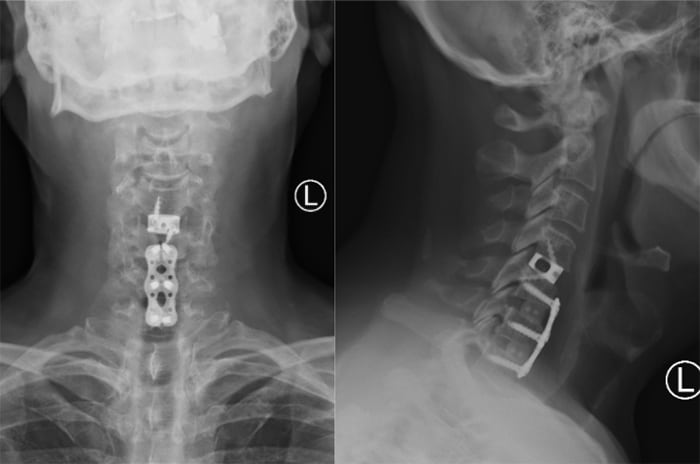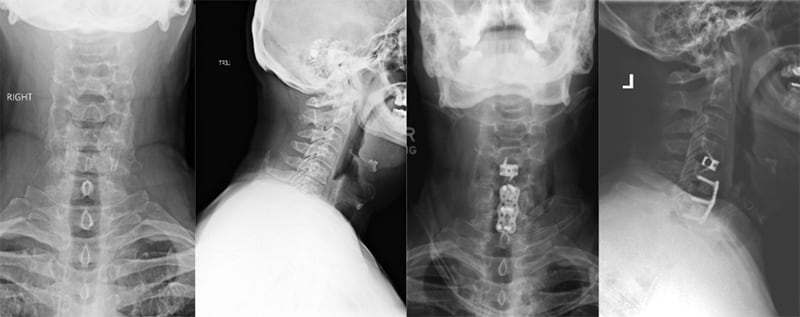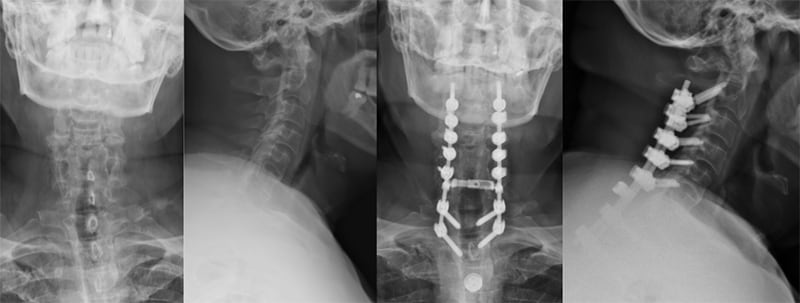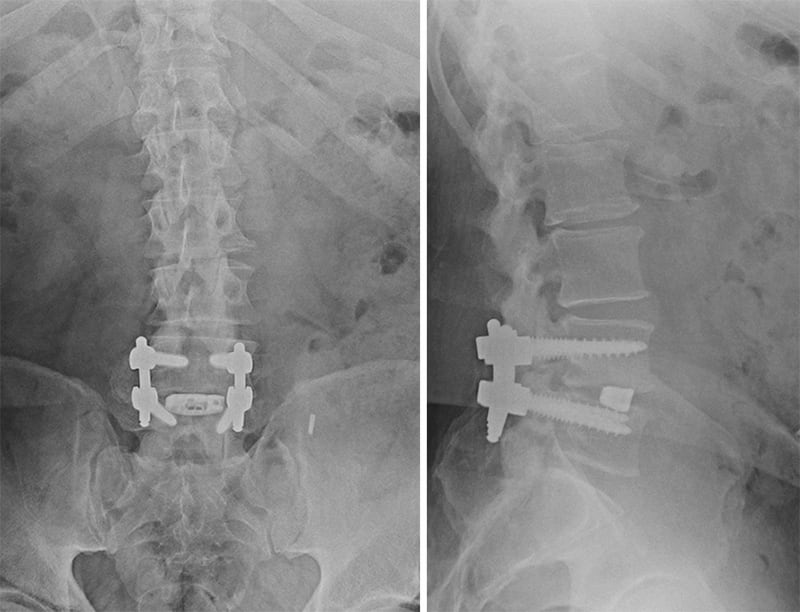Spinal Fusion
Anterior Cervical Discectomy & Fusion (ACDF)
An anterior cervical discectomy and fusion involves removing the damaged cervical disc and replacing it with bone. This process allows the bone graft to fuse the vertebrae together as one.


Anterior Cervical Corpectomy & Fusion (ACCF)
An anterior cervical corpectomy and fusion involves removing both the damaged cervical discs and the front part of the vertebrae. This is necessary when there is compression of the spinal cord, not just behind the disc, but also behind the vertebral body.

Posterior Cervical Fusion
Posterior cervical fusion can be done at one or multiple levels in your neck. It may also be done in combination with a decompression procedure (to take the pressure off of your nerves). The decompression operations include: foraminotomy, laminectomy, and/or laminoplasty.
- Posterior Cervical Foraminotomy – The foramen is the channel where the spinal nerve comes out of the spinal canal. If this channel is narrowed by bone spurs or a damaged disc, we can enlarge it by removing some of the bone in the back side of the foramen.
- Posterior Cervical Laminectomy – This involves removal of the lamina (the back roof of the spine) to take the pressure off of the spinal cord.
The incision for posterior cervical fusion will be made up and down along the back of your neck for this surgery. The size of the incision depends on how many levels of the cervical spine will be addressed with the surgery.

Thoracolumbar Fusion
Spinal fusion is a surgery done to permanently stabilize and fix two vertebrae in your spine. This effectively eliminates motion between these two segments.
There are many reasons why Dr. Kim may recommend a spinal fusion. Some examples include:
- Spinal instability such as that seen in spondylolisthesis or after trauma
- Spinal deformity correction
- Recurrent disc herniation

In many cases, metal rods and screws will be used to reduce motion and allow the vertebrae to heal together.